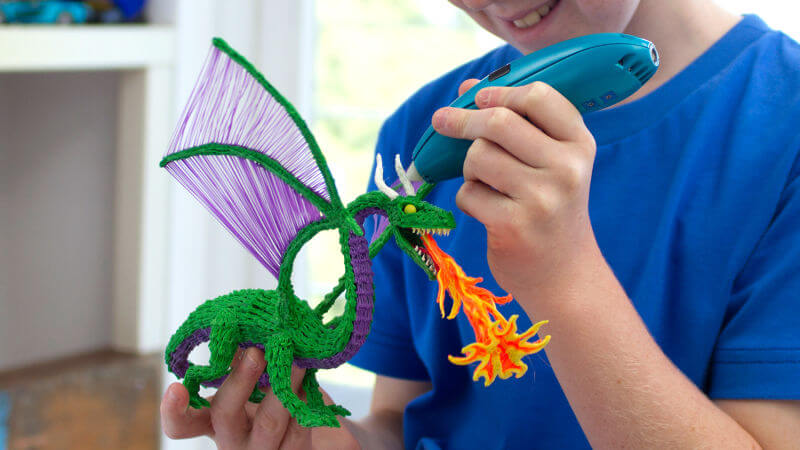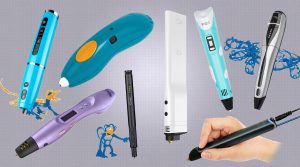So… you’re looking for a cool toy for your creative kid. 3D pens look awesome, so you’ll just grab one that’s not too pricey and seems to have good reviews, and set him up for hours and hours of endless fun, right? Those first reviews look awesome…
But the you read on. And you see that things get complicated:
- most 3D pens require lots of practice and dexterity…
- some offer great potential for injury: their hot tips can cause burns and scalding ????, which are pretty far from anyone’s definition of fun…
- most of the low-temperature plastic ones have bad reviews…
- the “cool ink” photopolymer ones seem expensiveand some say they produce things that are more like sticky messes than the “works of art” your kid could be proud of…
- …and there’s also that thing about the UV-light: could your kid go blind if he looks directly into it?! ???? (red more to find out)
- and there’s also the fact that there seem to be not so many truly mobile options: you’d prefer your kind to run around more instead of staying chained to a desk or near a wall socket in order to play
At this point you may already feel that you’re way in over your head and that it would be better to look for a simpler toy…
But 3D Pen Hub has your back! We’ve spent hours and hours looking at the current selection of 3D pens, figured out which are the right criteria for scoring kid-friendly 3D pens (we’ve chosen: a – safety, b – ease of use, c – creative potential and d – mobility).
A more in-depth review of the 3D pens for which we’ve made our “best for kids” selection is in our Best 3D pens guide – spring 2017 article. But since we have the impatience of kids, we’ll jump right to our Top 3 results here.
1st place – 3Doodler Start
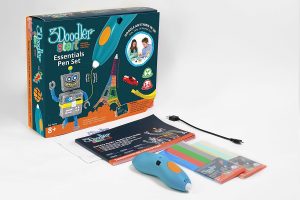
This pen gets most things pretty right (so right that it’s also pretty fun for adults to play with it):
- safety – the nozzle only gets warm, not hot enough to cause any kinds of burns or scalding even for the clumsiest or most active kids, and, most important of all, it gets this without sacrificing…
- creative potential – despite the usage of low temperature plastic (proprietary biopolymer wit PCL-like properties, melting at around 60C/140F), pretty complex objects ca be easily drawn with this pen, and the fact that the plastic takes a few more moments to harden turned out to actually be a plus for this pen: when you make a mistake with it, you still have a chance to correct it, ensuring great results despite some clumsiness
- ease of use – just one button, and its pre-set speed/temperature is actually great! hard to get any easier than this
- mobility – it has a battery that can last for up to 1 h (if this ain’t enough, just plug in its Micro USB charging cable and keep drawing)
The last point is what really sets it apart in this current generation of mobile pens: most plastic 3D pens have no good wireless capability – powering it form a wall socket, or from a wire connected to an USB power brick?! …really, which of your kid’s other toys needs a wire…in 2017?!
The experience is not perfect of course. The usage of low temperature plastic makes it kind of impossible to “draw up in the air” as you see in most 3D pen commercials. But then again, we know that even most adults (me included!) have a pretty hard time doing the “draw up in the air” trick even after hours of practice… so it’s not that much of a difference. Though you definitely won’t be doing any household repairs of plastic objects with this pen, or actually use it to print office furniture or jewels. Not that your kinds would need or want to perform such utilitarian feats!
- kids can easily draw awesome things with this one
- wireless
- easiest to use
- no hot tip
- limited to low temperature bioplastic – can’t draw up in the air, fix household objects, or make practically useful artefacts
See the full specs of 3Doodler Start on its dedicated page in our 3D Pens DB.
2nd place – CreoPop 3D Pen
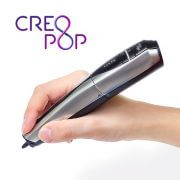
CreoPop’s 3D is a truly new technology: it used a special “cool ink” photopolymer that is being hardened by shining UV-light on it from the tip of the pen. If that doesn’t sound really coolto you, I don’t know what would!
From this come the two main selling points for this pen: no hot parts and wireless (since the pen doesn’t need tons of energy to melt stuff, it obviously wasn’t that hard to make it work using a phone-like USB-charged internal battery).
Another cool thing with this one is that you can draw “straight up” (and have it stay hardened up) or at straight angles. Looks cool:
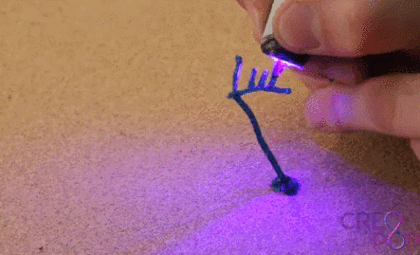
…but it’s quite slow and require lots of patience.
Oh, and for those worried about how safe UV is for the eyes ???? : according to the certification papers, it’s safe because eyes normally blink as a reflex after looking straight into the light, so it’s practically unlikely for anyone to stare directly into the UV-LED to be harmed by it (indirect and short term exposure should be safe).
- wireless
- no hot parts
- ability to draw at angles and shapes impossible for molten plastic pens
- special inks to:
- draw on skin
- draw magnetic things like fridge magnets
- aromatic inks
- not that easy to use: its multiple usage modes and buttons require a quick reading of the instructions manual
- requires some patience and dexterity for good looking results
- in clumsy hands, it can result in a gooey sticky mess all over the place
See the full specs of CreoPop 3D Pen on its dedicated page in our 3D Pens DB.
3rd place – 3Doodler Create
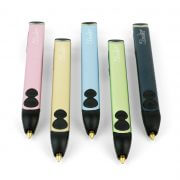
This is the main 3D pen from the 3Dooler rage, and it’s labeled as “kid oriented”. But to be honest, it’s definitely more kid friendly than all the other cheap options. It’s rated 14+ because its tip can get hot. But it’s incredibly easy to use with its simple 2 buttons operation: one for slow speed and one for fast speed.
But with proper adult supervision much younger kids will be able to craft truly stunning models! This is mainly because of the range of plastics it supports: PLA, ABS and FLEXY, which offer much greater creative potential.

Also, since it uses 3 mm rods instead of 1.75 mm filaments like other PLA & ABS pens, it’s much easier to handle for kids. If you have a bright kid and you want to amplify his/her creativity, this pen is definitely an option!
- supports regular plastics, with all their special varieties: 3 mm PLA, ABS and FLEXY, so your kid ca “draw up in the air” (with ABS plastic) or make flexibly toys (with FLEXY plastic)
- offers better control, but it’s still easy to use
- extra multiple size & shape tips – even more creative potential
- wired – needs to be plugged in either to its mobility JetPack (purchased separately)
- hot tip
See the full specs of 3Doodler Create on its dedicated page in our 3D Pens DB.

